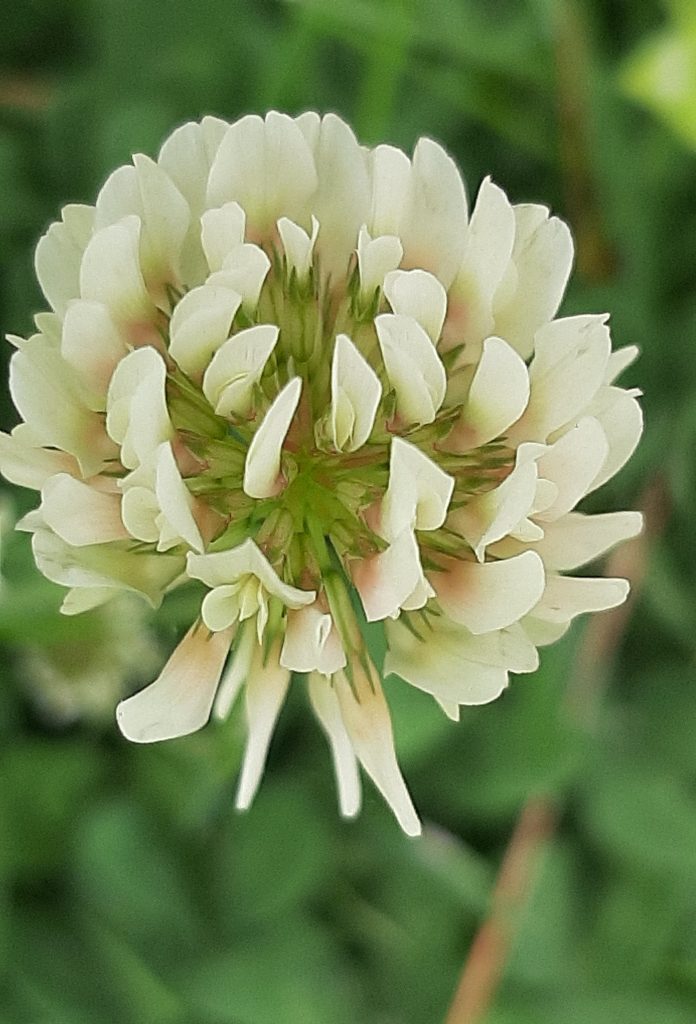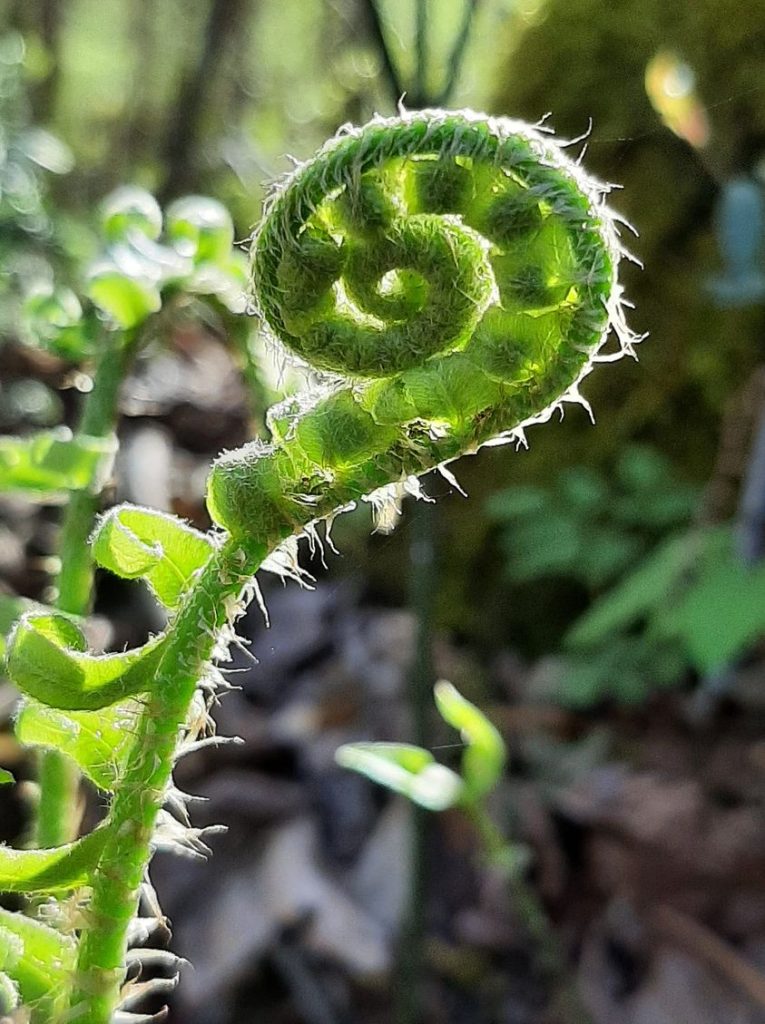 My favorite place to forage for wild foods is a springtime lawn. All sorts of plants, like clover (all species), dandelion, ground ivy, violets, and plantain are great to eat—and the good news is they’re not native plants. You can harvest as much as you like and not disrupt any fragile ecosystems. (Although do bear in mind that dandelions are a very important survival food for honeybees in early spring.)
My favorite place to forage for wild foods is a springtime lawn. All sorts of plants, like clover (all species), dandelion, ground ivy, violets, and plantain are great to eat—and the good news is they’re not native plants. You can harvest as much as you like and not disrupt any fragile ecosystems. (Although do bear in mind that dandelions are a very important survival food for honeybees in early spring.)
 The thing about spring greens is that you have to catch them early, before the flowers arrive. Once you see the flowers or the seeds, it’s too late–all that tender sweetness is gone, like bolted lettuce. As the plant flowers, the leaves change from a tasty, crunchy mouthful to chewy, stringy leaves that are as bitter as a pill. This makes perfect sense, from a plant’s point of view. Once the plant is putting energy into reproduction, creating the flowers which will become the seeds of the next generation, the plant is “anxious” to keep from being nibbled by any organism, be it insect, deer, rabbit, or human. The plant creates ill-tasting, bitter chemicals that help fend off hungry herbivores.
The thing about spring greens is that you have to catch them early, before the flowers arrive. Once you see the flowers or the seeds, it’s too late–all that tender sweetness is gone, like bolted lettuce. As the plant flowers, the leaves change from a tasty, crunchy mouthful to chewy, stringy leaves that are as bitter as a pill. This makes perfect sense, from a plant’s point of view. Once the plant is putting energy into reproduction, creating the flowers which will become the seeds of the next generation, the plant is “anxious” to keep from being nibbled by any organism, be it insect, deer, rabbit, or human. The plant creates ill-tasting, bitter chemicals that help fend off hungry herbivores.
Wild spring greens have a tangy, bold taste–I like to blend them with some store-bought lettuce to soften their punch. But for the true gourmet flavor of wild spring greens, get’em while they’re young. Once you see that yellow blossom, the dandelions are over the hill.
Beware, though, where you’re gathering. Many lawn-owners apply herbicides: poison chemicals which target all broad-leaved species. Not the kind of salad dressing you want to eat.
Forest Foraging
 When you’re heading off the lawn and into the woods, you really need to consider ethics—the environmental impact of removing plants from their native habitat. Most forest species are native, and not very common. Some of the loveliest spring wildflowers taste great, but unless your plane has crashed and you’re stranded in the wild on the verge of starvation, leave them alone.
When you’re heading off the lawn and into the woods, you really need to consider ethics—the environmental impact of removing plants from their native habitat. Most forest species are native, and not very common. Some of the loveliest spring wildflowers taste great, but unless your plane has crashed and you’re stranded in the wild on the verge of starvation, leave them alone.
I’m all for enjoying the thrill of foraging from the wild, but many native plants are all too easy to eliminate from their natural habitat. Leeks, for example, are a spring wildflower/wild food in grave danger of being loved to death by foragers.
Ferns are another common foraging target. Many people ask me if you can eat fiddleheads. The answer is…sometimes. First of all, what exactly is a fiddlehead, anyway? It isn’t a type of fern, it’s a stage of growth–a fiddlehead simply means a young fern, the way a sapling is a young tree. Ferns are perennials, and each year as they rise from the soil, the fronds of most species of ferns are curled in a shape resembling the classic curl at the end of a violin. Then the fern leaves slowly open, like a fist unclenching.
But there are fiddleheads you can eat, and then there are fiddleheads you shouldn’t. The fiddleheads of some kinds of fern are fairly tasty, if a bit fuzzy. However, the fiddleheads of some species (such as sensitive fern) are mildly toxic. So you want to know which fern you’re harvesting.
You’ll want to know what kind of fern you’re gathering for another reason, too: many ferns are increasingly rare. Some are on state lists of protected plants, some on federal endangered species lists. So enjoy fiddleheads sparingly.
From Pest to Pesto
 Garlic mustard. The name sounds tasty, doesn’t it? It’s a pretty little wildflower with white blossoms. The leaves have an attractively scalloped edge, and a savory garlic taste, a fantastic addition to salads, quiche, and stir-fry. A lovely and useful plant, you’d think. But I spend a lot of time killing it. Ripping it out by the roots. Doing everything short of spraying a dose of Round-Up on it.
Garlic mustard. The name sounds tasty, doesn’t it? It’s a pretty little wildflower with white blossoms. The leaves have an attractively scalloped edge, and a savory garlic taste, a fantastic addition to salads, quiche, and stir-fry. A lovely and useful plant, you’d think. But I spend a lot of time killing it. Ripping it out by the roots. Doing everything short of spraying a dose of Round-Up on it.
Why? I have an enormous tolerance for non-native “weeds,” as my undying love for dandelions shows. Why enjoy the dandelions, the clover, the daisies, and murder the poor little garlic mustard?
Two words. Shade tolerant.
Garlic mustard is able to grow in shade. And shade is the barrier most non-native plants won’t cross. Many non-native plants don’t pose a threat to wilderness areas—tulips, petunias, peonies—they’re none of them native American plants, but they tend to stay where they’re put.
Not so for garlic mustard. Doesn’t mind shade a bit. And that makes it a major threat to woodland wildflowers. Garlic mustard will crowd out many species of woodland wildflowers and ferns. And here’s the really amazing part. Even after the plant is completely uprooted and thrown on the compost pile, the flowers can continue producing seed. Uprooted, limp and dead-looking, yet they go on developing–living after death, like little green zombies. It took me a few years to figure out why the garlic mustard grew so prolifically around my compost pile. So you have to throw the plants into the trash, then off to the landfill.
Or, you could make pesto. The chopped and blended leaves of garlic mustard are delicious when turned into pesto. And you’re helping to remove a serious threat to the forest ecosystem. Win-win.





I love this article! I’ve heard elsewhere about grabbing dandelions early, but I did not know about the garlic mustard. Does is grow in the west? I would love to make pesto out of it. You’ve peaked my interest.
This is just to thank you, super valuable information i will keep in mind this Spring. Promise to watch for those Mustard Greens. 🌎